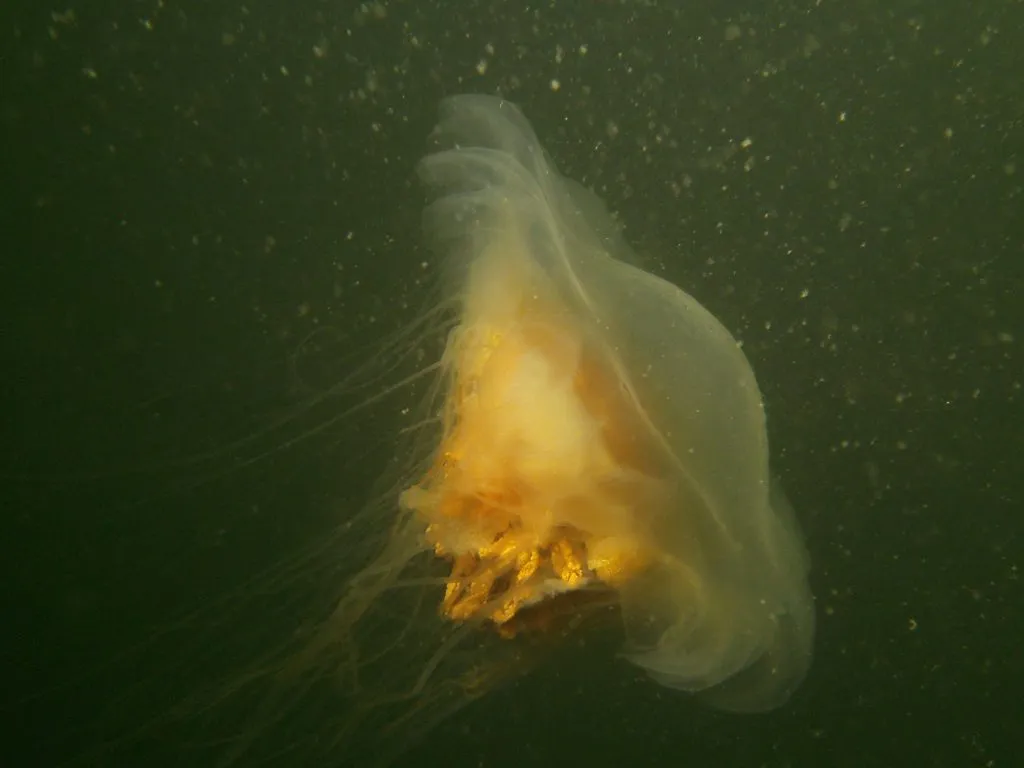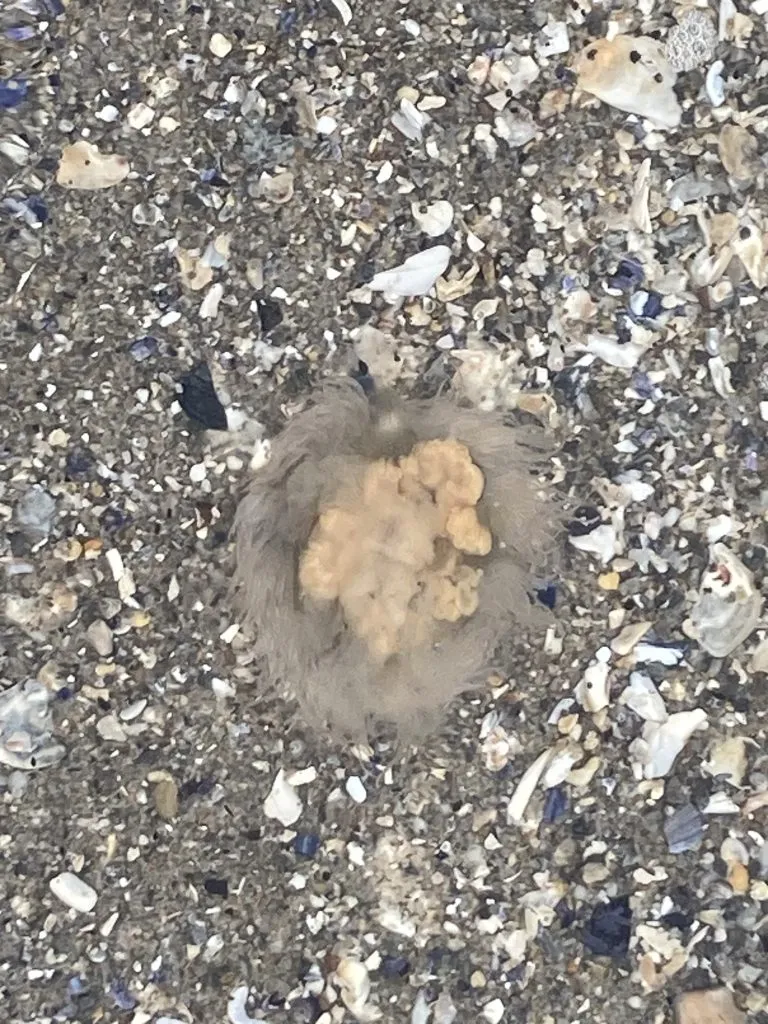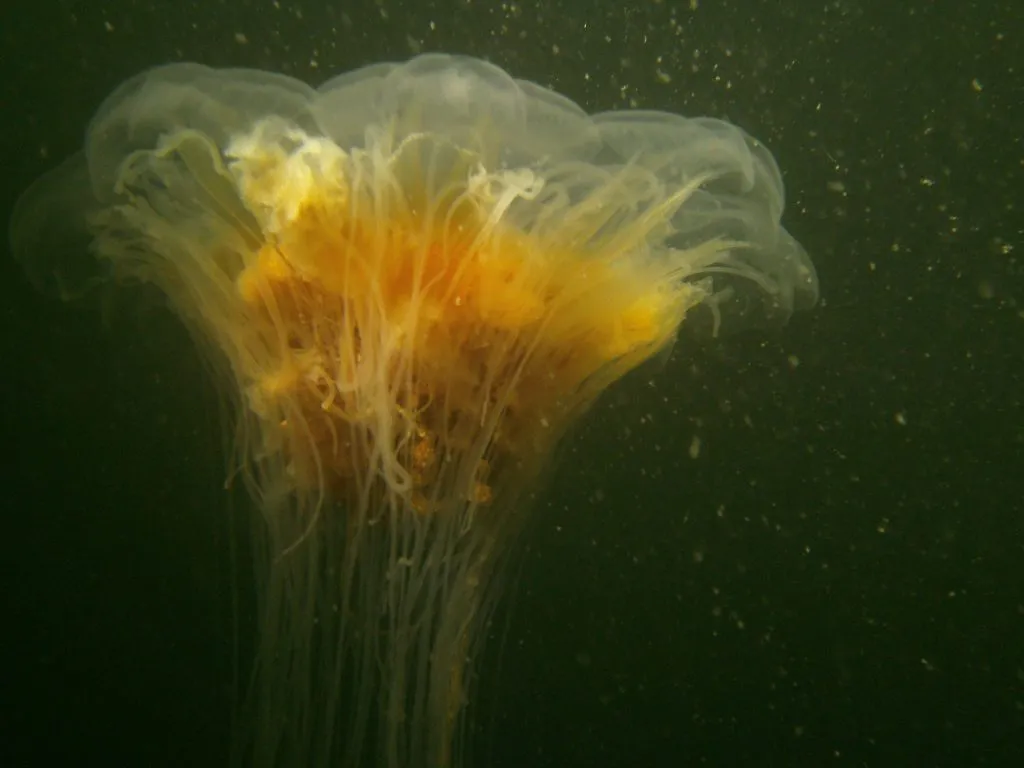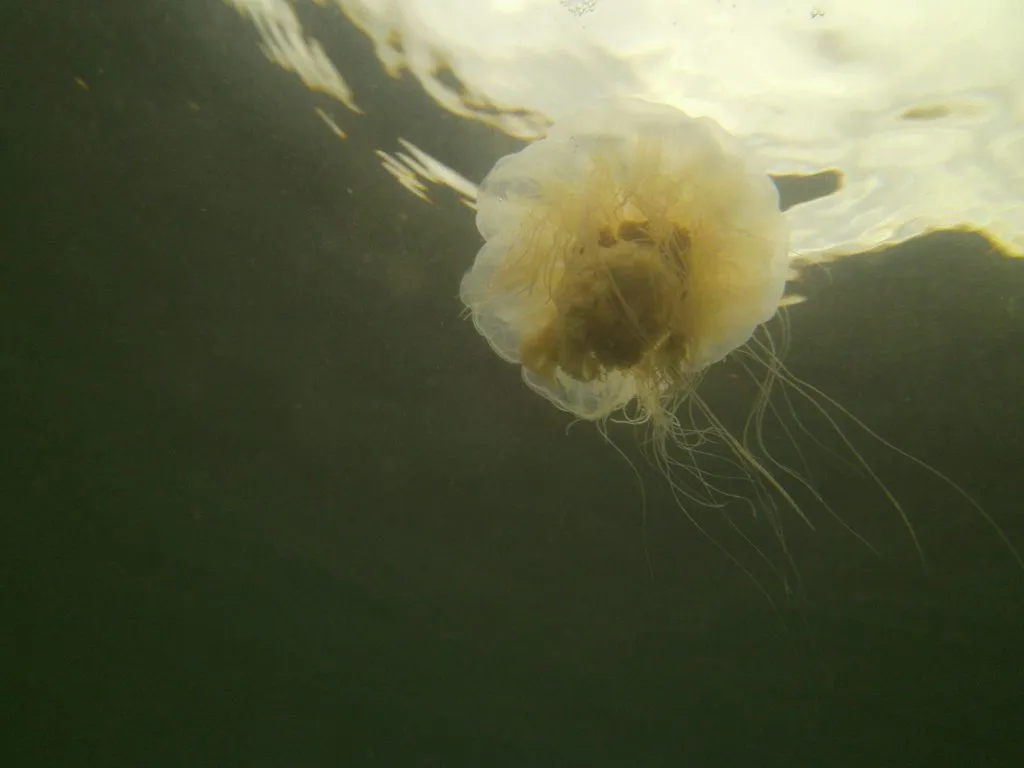New England Mermaid
You know the old saying, March comes in like a lion and leaves like a lamb. That didn’t actually happen this year. But May came in like a lion – actually, like a Lion’s Mane Jellyfish! As I learned more about them, I was reminded of the Lion in The Wizard of Oz – yet completely opposite! This lion has no brain (and that was ok for Scarecrow), and he has no heart (like the Tin Man), and has no need for courage. This lion is amazing!
I have personally never seen so many at a time in my 6 decades of life! Granted, I wasn’t born a mermaid, so I may not have been as aware in my earlier years. That said, even as a mermaid, I’ve only seen a few at a time. Not this year! It started when I was walking along a local shoreline. I spotted small ones at the edge of the tide. And then I walked along another shoreline a couple week’s later and had the same experience.
And then I got to dive with them, and they were everywhere, and sooooo beautiful. This is where us New England Merfolk have an advantage over our tropical relatives. At least this time of year, we are generally 99% covered in some type of protective coating. Our neoprene and nylon epidermal layers are in full coverage mode.
Often my visits to my underwater friends are fairly reserved. This was a full-out dance party. Everywhere I looked, my fellow party-goers were dancing. I would be focused on one partner, just a few inches in front of me, and another one would sneak up from the side and stretch its long, delicate tentacles between the two of us to ask “May I step in?” How would I describe the experience? Beautiful, awe-inspiring, other-worldly. I did pay attention the graceful and delicate choreography. These alien-like beings can move in two ways. Mostly, they drift along with the currents and the tides. Frankly, they’re rather chill! They do have the ability to propel themselves with small bursts of water, but this is an autonomic response, generally to some type of stressor, rather than a thought-out chosen response. You see, these lovely drifters do not have brains. Now, don’t get me wrong – I am not insulting them. I can think of some human beings (not you!) who have brains but I question the effectiveness of their particular brain. As said in the all-time move classic Young Frankenstein, some brains are “Abby Normal.” These drifting dancers do, however, have a nervous system, so they do have autonomic responses to stimuli.
Below, you can see one of my dance partners showing off some moves. The clearish whitish umbrella-like bell and some of the reddish section is the main body, containing the digestive and reproductive systems. These party-goers really only care about food and sex, so they have little need for too many other organs, including a heart. Yup, that’s right. They are not only brainless, but also heartless. But they have no desire to harm you. They do not actually “decide” to sting somebody or something. See all those long tentacles? There are generally about 1,000 per animal. Along most of those tentacles are stinging cells, called nematocysts, kind of like teeny tiny coils ready to strike. One little touch stimulation, and, boom, the toxic stinger is released. If things go well for my gelatinous friends, they will have found a small fish, copepod, or other delicious morsel, and their “oral arms” which are the things that look like thicker tentacles, will bring the now paralyzed food to their mouths. They really don’t want to waste their stings on us merpeople or on humans, even brainless and heartless humans. Lion’s Mane jellies do not hate!

I did not get stung during the dance party. I permitted my dance partners to contact my thermal epidermal layers and even my mask, but was careful to not permit contact with the very small amount of exposed keratin-infused skin section. Let’s not leave any doubt here – these are no-skin contact friends. Do not pet, snuggle, or otherwise physically engage with these friends. I highly discourage skinny dipping with them. Their tentacles, which are plentiful and can get very long, pack a punch – a sting that will definitely, well, sting. A small one on shore can look similar to the clear glob of the rather unstingy moon jelly that some of us held in our hands as kids – honestly, I don’t know why we were encouraged to do that, but times were different. Red is often used as a caution signal. If you see red in the glob, heed caution. My apologies to the jellies for referring to them as globs, but that’s the best description I could think of to keep my shore-wandering friends, especially the little ones, safe. They do, honestly, have a globular appearance, because they are 95% water. Us merpeople and our human relatives are 60% water. Apparently, that 35% more water makes a really big difference! Also, when visiting these blobby friends, be aware that their tentacles can still sting when they are dead for a couple days or if they disconnect from the body – please do not test this.

The bells (main body part) of my dance partners ranged from the size of the tip of my thumb to several inches across. They are the largest species of jellyfish on the planet, having been known to grow as large as 8 feet across with 120 foot-long tentacles. While that would be amazing to see, you would be more likely to find one of those in far out in the open ocean and not in an in-shore dance party. They prefer to wander out into the cold open sea and travel solo. They grow larger in colder water (unlike some beings that shrink … hee hee … sorry, I couldn’t resist).
I wondered … are the larger ones older than the smaller ones? If they are, it isn’t by much. You see, they only live in their jellyfish form for about a year. They start as larva, find a surface to call home, grow into a polyp (kind of like a coral or anemone that is attached to a substrate), bud off and then … alien-looking graceful globular amazing jelly drifting about for a year, until they reproduce, and their life is complete.

I researched why we are seeing so many now, at a time when they are not usually as common. We usually see them later in the summer, and not in such large groups. There are a lot of theories, and I could not find anything that seemed to have been proven. Could changes in currents or bigger storms be bringing them closer to shore? Warmer waters bringing them in? Well, they like cold water. Decreases in predators such as the leatherback sea turtle? Increases in other food? We’re really not sure. And they likely do not know themselves, because, well, they have no brain. What we do know is that we should admire them with respect and caution while they visit, and, it is quite likely that they will drift away just as quickly as they came.
They came in with a roar, they graced me with their presence, and who knows …
Until next time … which may actually be tomorrow when I visit a different shoreline and dive into the sea … drift along, my tentacled brainless and heartless friends.


Leave a Comment